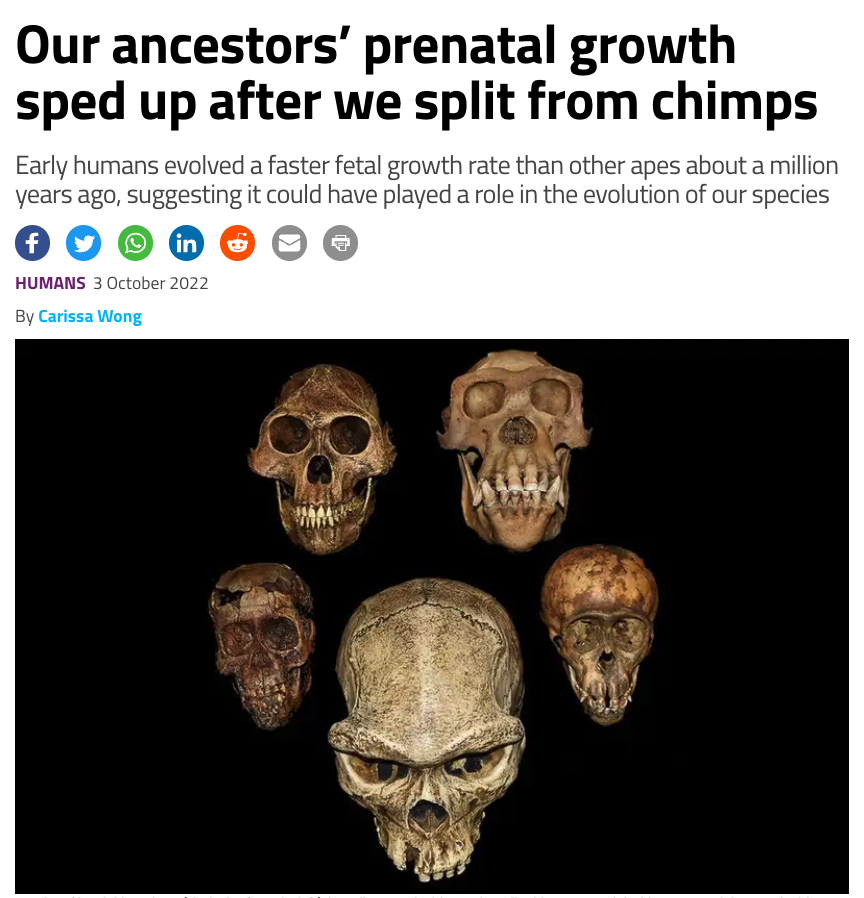We have a new paper out today in PNAS! This project, led by Tesla Monson (Western Washington University, WWU), and in collaboration with Andrew Weitz (WWU) and Leslea Hlusko (Spain’s National Research Center on Human Evolution, CENIEH) developed two new models for estimating prenatal growth rate: one from dental (molar) proportions, and one from endocranial volume. We applied these new methods to the hominid fossil record to find that prenatal growth rates generally increased throughout the Plio-Pleistocene, and that a human-like prenatal growth rate evolved less than 1 million years ago, but well before the emergence of the modern human species (ca. 200-300 ka). These new methods open a new and really valuable window onto pregnancy in the fossil record by using a part of the anatomy that dominates the vertebrate fossil record (another reason to love teeth!). You can check out the paper here, some coverage by New Scientist here (shown below) and Western Washington University here, and a short summary by Science here.

